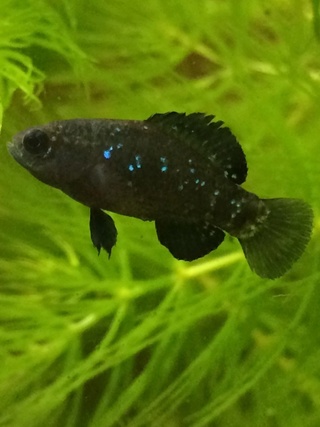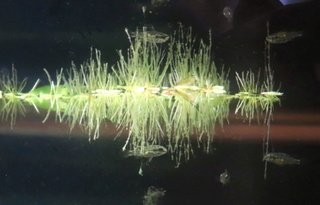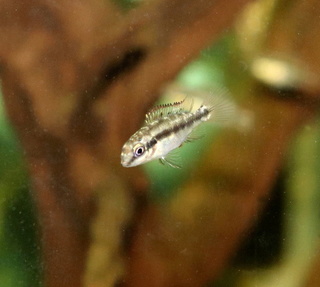What type of heater should I buy ?
2 posters
Page 1 of 1
 What type of heater should I buy ?
What type of heater should I buy ?
What type of heater should I buy ?
In general most aquarium fish species do quite well at room temperature, 72 F or 22 C. If you are planning to breed fish, then you may wish to invest in a heater for those fish which are from equatorial regions. However, many homes may not be heated efficiently or there may be drafts which create cool pockets in the area of the aquarium. Heaters can be, and are considered to be an essential piece of equipment.
There are many pros and cons to be considered. There have been known failures where a high capacity heater overheats or glass breakage. Electrical shock from a broken glass housing or water dripping from the tank to the plug receptacle (you should always ensure a drip line). There are other measures that can be easily made to prevent these catastrophic events, and by splitting the required wattage between heaters you can reduce the chance of overheating / cooling due to failure.
I like the submersible type of heater since I have the option of placing upright or hiding in the substrate. There are upright traditional types which need to be kept with the dials / heads out of the water. For truly hidden temperature control there are in line heaters which affix to the canister water lines. Your choice will depend upon your budget and whether you prefer to see the heater tube and cords.
There general formula for wattage is to take the temperature desired minus the temperature of the house then divide by aquarium gallonage and wattage range. This thread will explore the advantages and disadvantages, tips for efficient placement and calculating the required heater wattage for your tank.
In general most aquarium fish species do quite well at room temperature, 72 F or 22 C. If you are planning to breed fish, then you may wish to invest in a heater for those fish which are from equatorial regions. However, many homes may not be heated efficiently or there may be drafts which create cool pockets in the area of the aquarium. Heaters can be, and are considered to be an essential piece of equipment.
There are many pros and cons to be considered. There have been known failures where a high capacity heater overheats or glass breakage. Electrical shock from a broken glass housing or water dripping from the tank to the plug receptacle (you should always ensure a drip line). There are other measures that can be easily made to prevent these catastrophic events, and by splitting the required wattage between heaters you can reduce the chance of overheating / cooling due to failure.
I like the submersible type of heater since I have the option of placing upright or hiding in the substrate. There are upright traditional types which need to be kept with the dials / heads out of the water. For truly hidden temperature control there are in line heaters which affix to the canister water lines. Your choice will depend upon your budget and whether you prefer to see the heater tube and cords.
There general formula for wattage is to take the temperature desired minus the temperature of the house then divide by aquarium gallonage and wattage range. This thread will explore the advantages and disadvantages, tips for efficient placement and calculating the required heater wattage for your tank.

alexmtl- Veteran Member

- Posts : 3274
Join date : 2013-09-07
Location : Montreal Quebec
 Sample Calculation for Heater Capacity
Sample Calculation for Heater Capacity
A properly calculated heater will have enough capacity to maintain the target temperature even on the coldest days of the year. Having too much wattage increases risk of overheating by shortening the time period that it takes for a failed heater to push the tank to a critical temperature. As heaters fail at an alarming rate, and even if you place multiple safeguards, it is wise to size the heaters properly. A temperature controller and splitting the heater wattage over several heaters are excellent fail safes, but there are still chances of failure (though minimized)
A guideline is to have three to five watts per gallon for every 10° Fahrenheit above room temperature that you wish to have keep the tank temperature. [(Desired Tank Temp − Room Temp) ÷ 10] × System Gallons × 3 (or 5) = Watts Desired
Calculation example (in fahrenheit):
55 Gallon System
76° Target temp
68° Room temp
There are two ranges for the wattage calculation. 3 is the lower value , and 5 is for the high value, as the number of watts required to heat the water. Lower wattage reduces the time to overheat whilst higher wattage increase chances of overheating.
Low Wattage (3W)
(76 − 68) ÷ 10) × 55 × 3 = 132 Watts
High Wattage (5W)
(76 − 68) ÷ 10) × 55 × 5 = 220 Watts
I tend to favour the lower wattage so I need 132 watts in my heater system. I can do this easily with a single 150 watt heater, but I could provide extra security in choosing three 50 watt heaters. Without doing the formal math, a 150 watt heater could easily raise the temperature quickly, if it fails. By splitting the wattage amongst three heaters, one heater failure would result in a low chance of overheating, giving you time to react to the failure (or notice it).
A guideline is to have three to five watts per gallon for every 10° Fahrenheit above room temperature that you wish to have keep the tank temperature. [(Desired Tank Temp − Room Temp) ÷ 10] × System Gallons × 3 (or 5) = Watts Desired
Calculation example (in fahrenheit):
55 Gallon System
76° Target temp
68° Room temp
There are two ranges for the wattage calculation. 3 is the lower value , and 5 is for the high value, as the number of watts required to heat the water. Lower wattage reduces the time to overheat whilst higher wattage increase chances of overheating.
Low Wattage (3W)
(76 − 68) ÷ 10) × 55 × 3 = 132 Watts
High Wattage (5W)
(76 − 68) ÷ 10) × 55 × 5 = 220 Watts
I tend to favour the lower wattage so I need 132 watts in my heater system. I can do this easily with a single 150 watt heater, but I could provide extra security in choosing three 50 watt heaters. Without doing the formal math, a 150 watt heater could easily raise the temperature quickly, if it fails. By splitting the wattage amongst three heaters, one heater failure would result in a low chance of overheating, giving you time to react to the failure (or notice it).

alexmtl- Veteran Member

- Posts : 3274
Join date : 2013-09-07
Location : Montreal Quebec
 Re: What type of heater should I buy ?
Re: What type of heater should I buy ?
A really good rule to go with is that if your aquarium is in an area of consistent (not up and down) warmth in your house, tailor your fish purchases to the environment you can provide without a heater. I keep my fish in the basement, in a room I have set up for them. The next room has an oil furnace and a water ehater in it, and the ambient winter temperature is 22 -23.
I avoid buying species that need real warmth (26) so I can avoid using heaters. It takes a little research, but most tropical fish are happy at 23.
When summer comes and temperatures become steady, unplug those heaters! Most are now cheaply made, and the heat controllers can malfunction with the moisture that gets in. When they start up in the Fall, you may get a surprise. I unlug them, take them out and put them somewhere safe and dry until they are needed again.
I avoid buying species that need real warmth (26) so I can avoid using heaters. It takes a little research, but most tropical fish are happy at 23.
When summer comes and temperatures become steady, unplug those heaters! Most are now cheaply made, and the heat controllers can malfunction with the moisture that gets in. When they start up in the Fall, you may get a surprise. I unlug them, take them out and put them somewhere safe and dry until they are needed again.

GaryE- Veteran Member

- Posts : 2505
Join date : 2013-09-07
 Similar topics
Similar topics» Heater placement
» Heater question
» What do I look for when buying an aquarium heater ?
» Domestics vs Wild/Wild-type
» Heater question
» What do I look for when buying an aquarium heater ?
» Domestics vs Wild/Wild-type
Page 1 of 1
Permissions in this forum:
You can reply to topics in this forum


 Alexmtl
Alexmtl


» Anyone still around? Need help transporting fish
» Stocking suggestions
» New Tank Purchase
» 3 Gallon Tetra half moon tank
» White floaty stuff in gold fish tank
» Ammonia in tap water
» Need advice for beginner with fresh water tank
» Fluval FX5 hose size?
» smart fish, dumb fish, pink fish...um, what rhymes with dumb?
» Is K&E sandblasting sand same as Black diamond?
» What the...is that a leak? NOOOOOOOOOOO!!!!! (a comedy of horrors...)
» Air stones and the noise they make
» aquatic medications
» film like stuff on the water surface of shark tank
» Articles on swordtail behaviour and fathead minnows
» Lets see your predators!
» Humane way to PTS a shark
» My tanks (Introducing myself)
» Build your own aquarium